
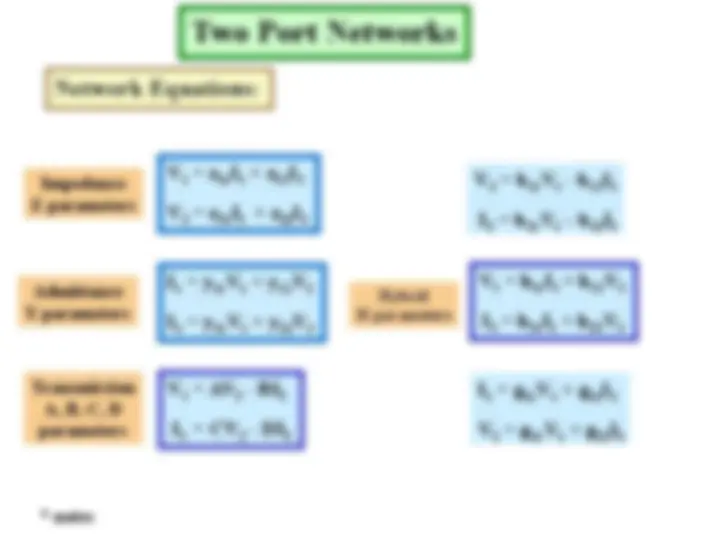
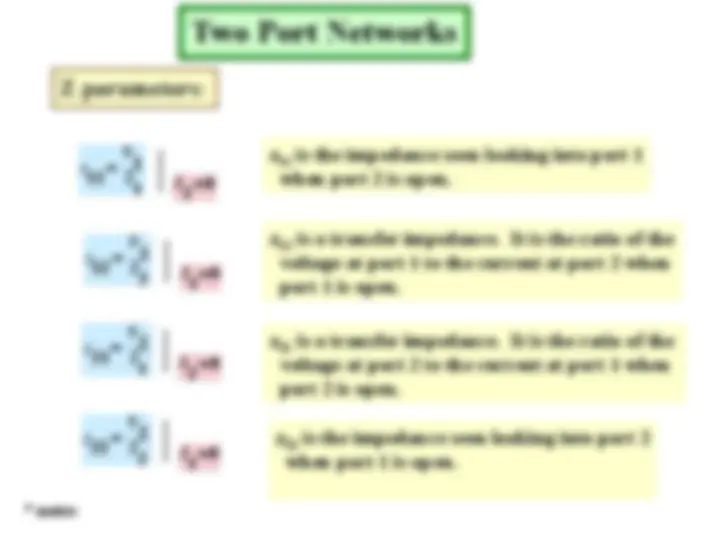
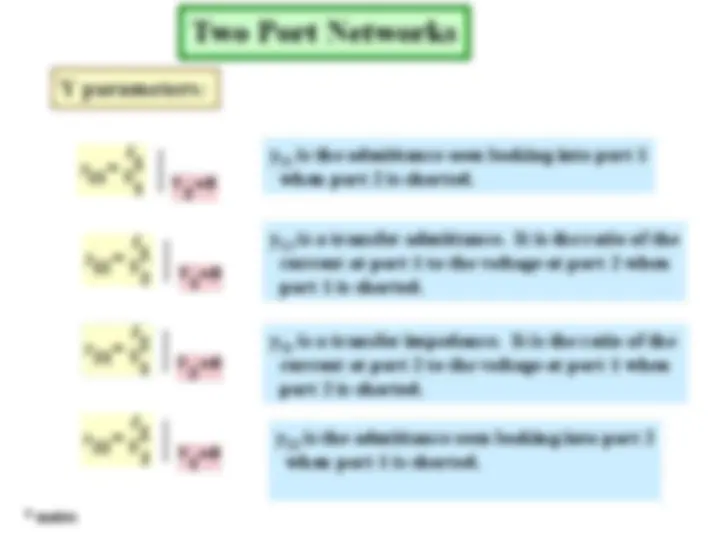
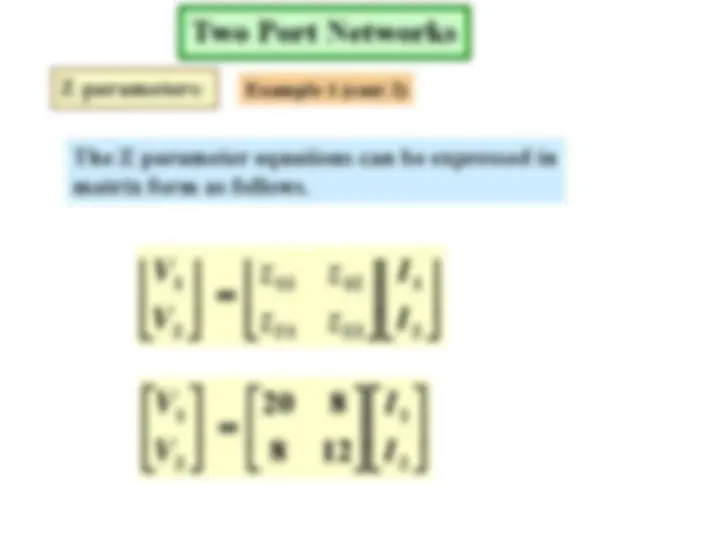
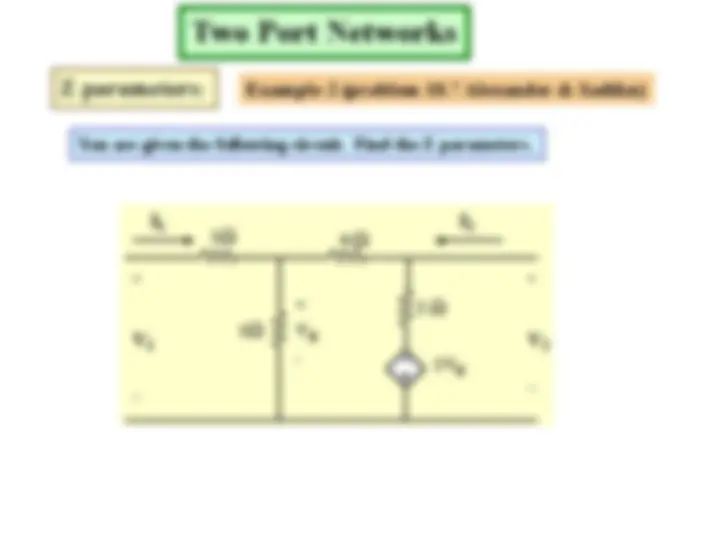
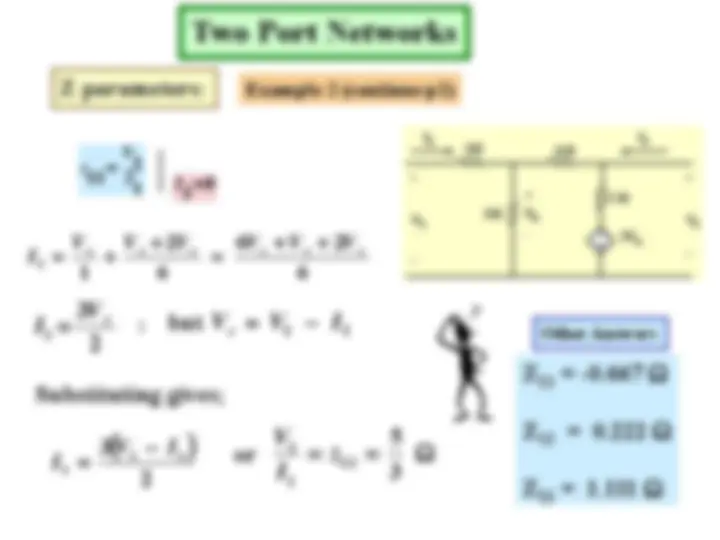
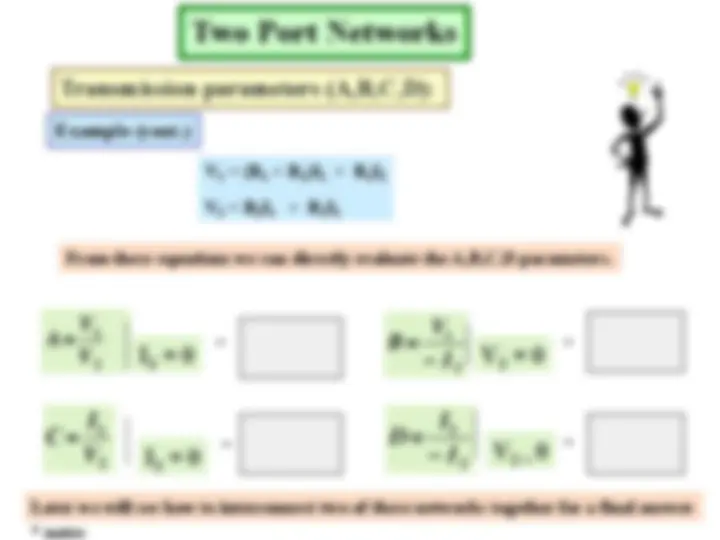
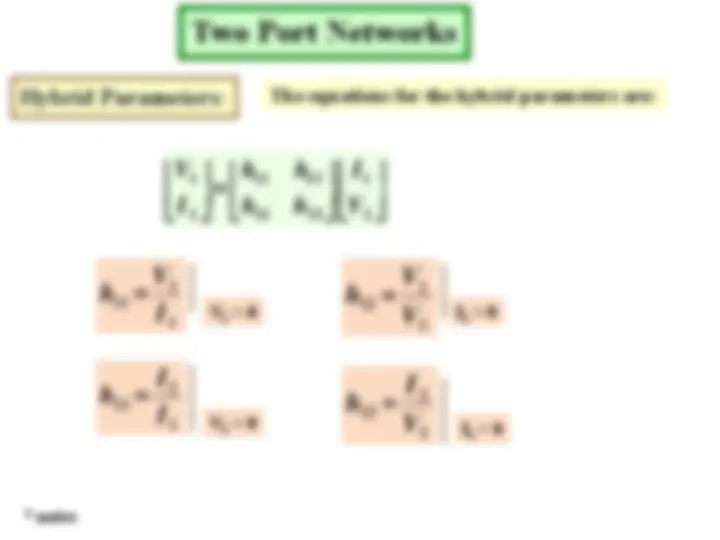
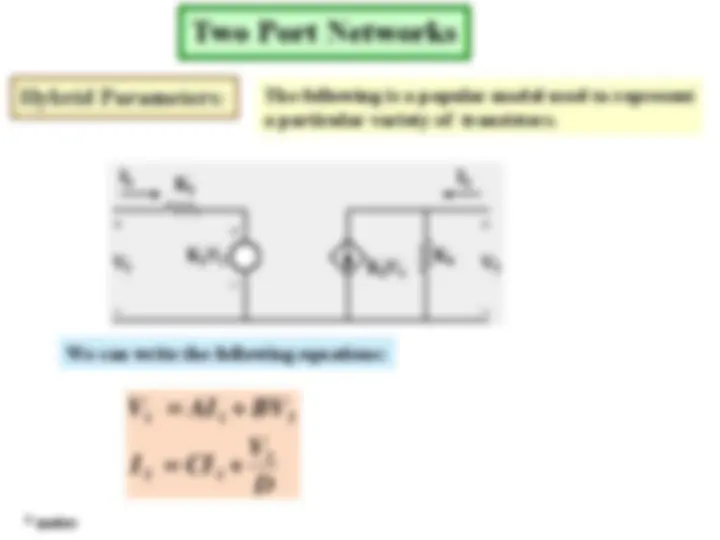
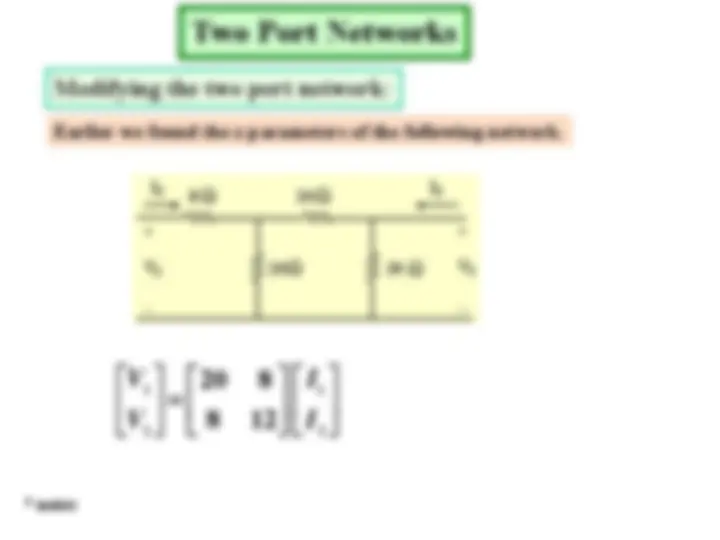
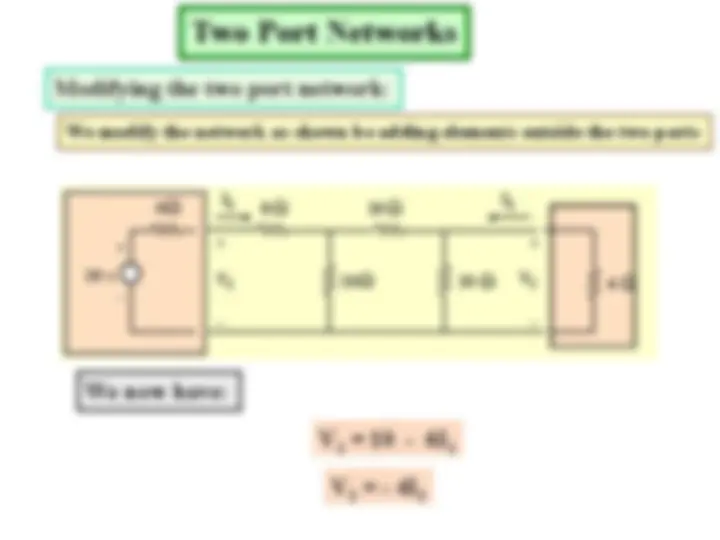
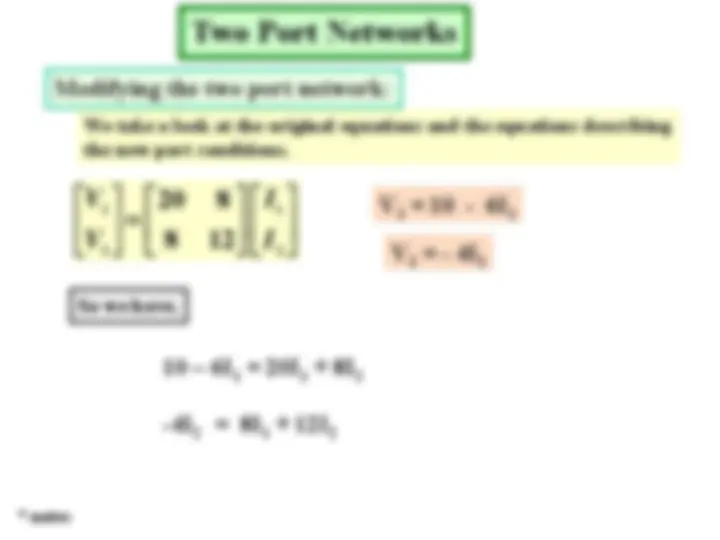
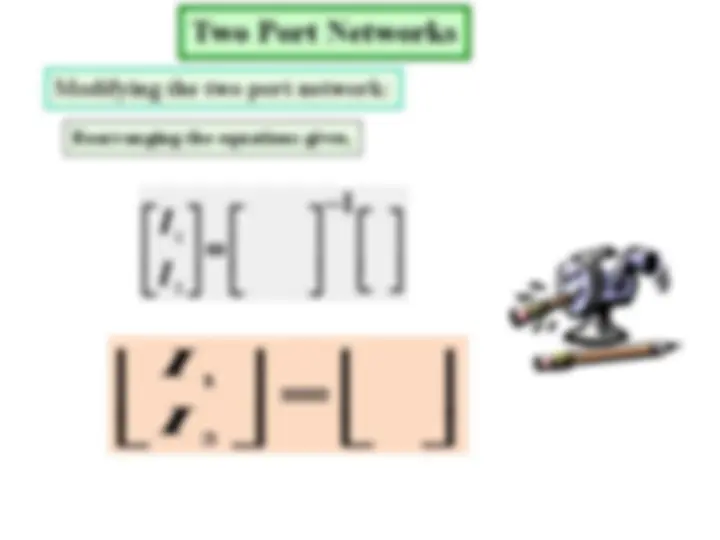
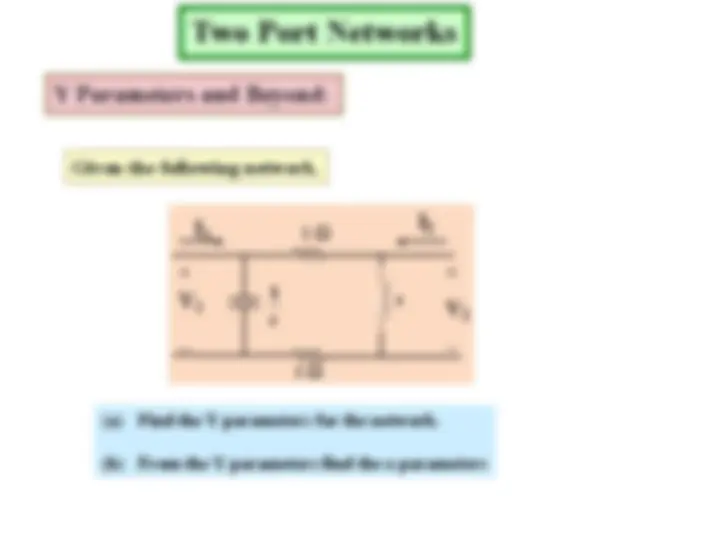
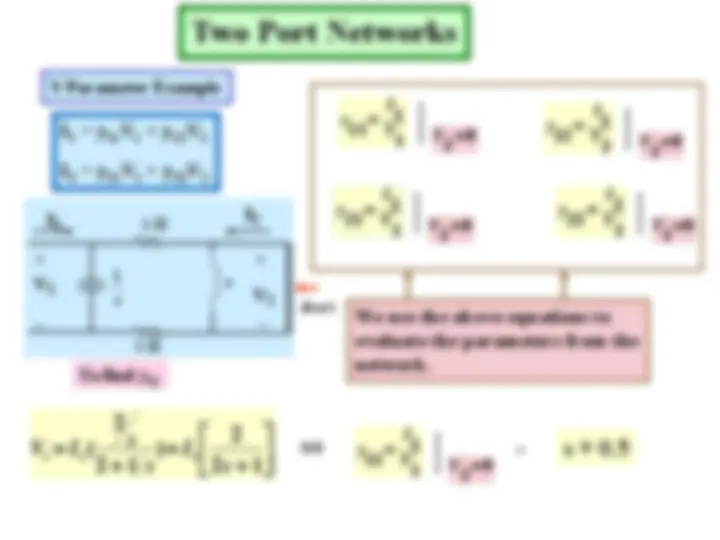
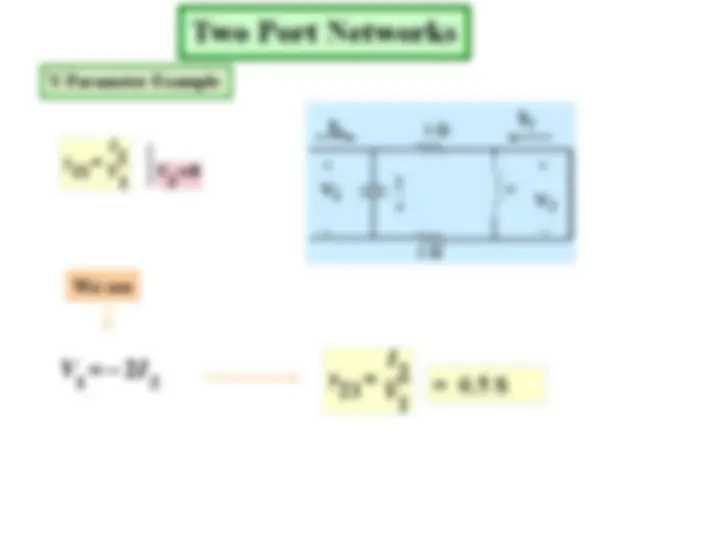
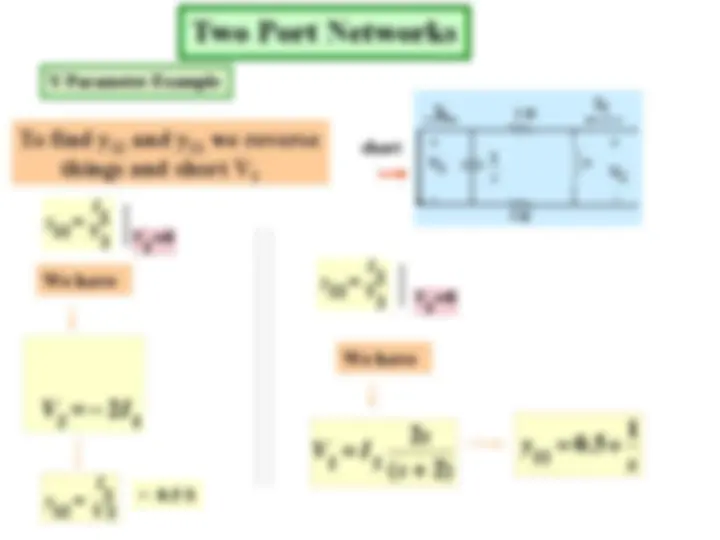
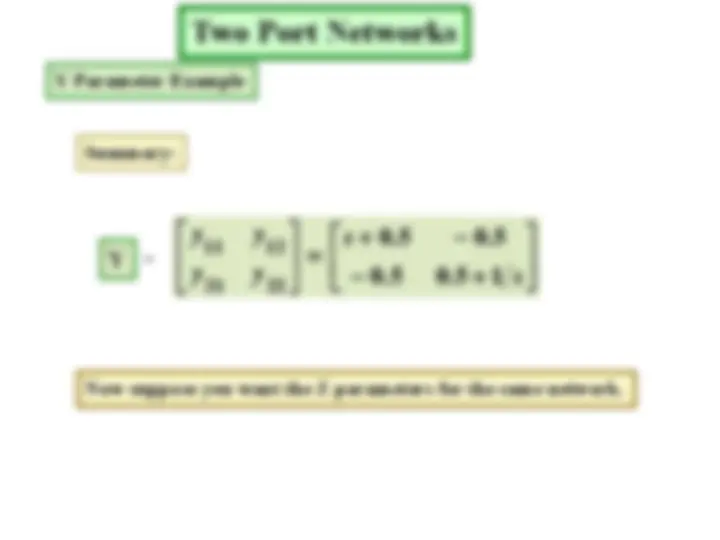
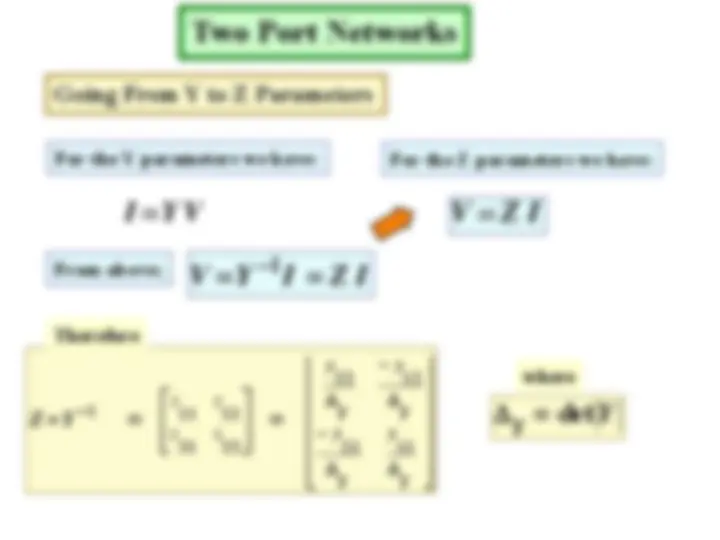
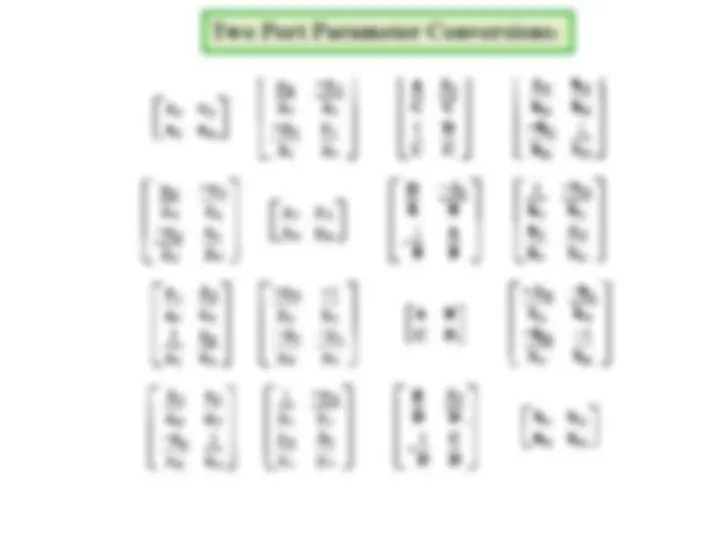
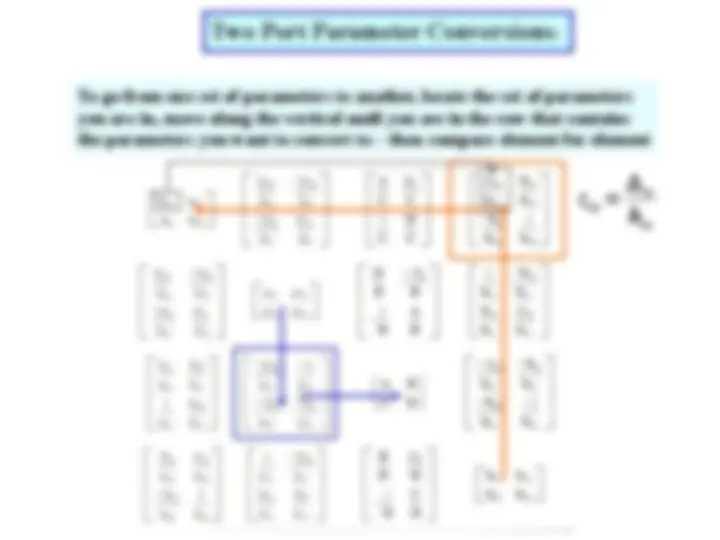
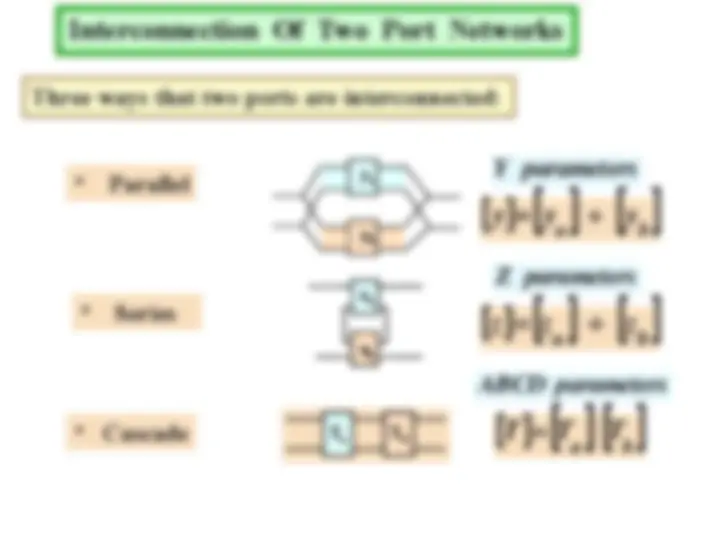
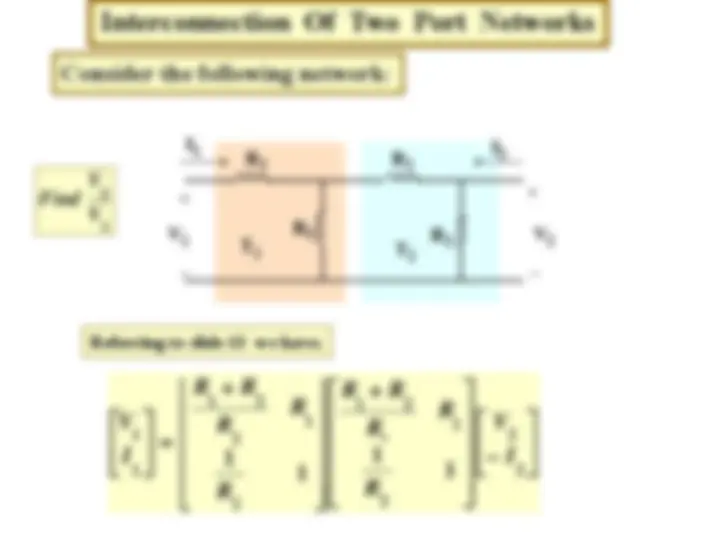
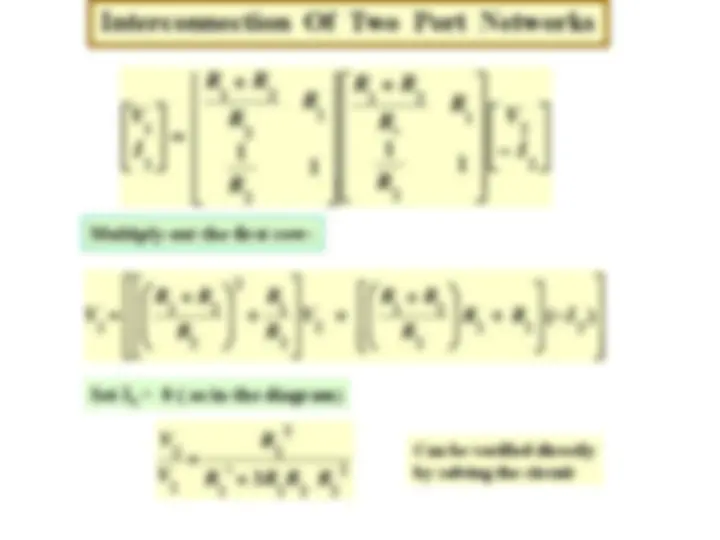




Study with the several resources on Docsity

Earn points by helping other students or get them with a premium plan


Prepare for your exams
Study with the several resources on Docsity

Earn points to download
Earn points by helping other students or get them with a premium plan
Community
Ask the community for help and clear up your study doubts
Discover the best universities in your country according to Docsity users
Free resources
Download our free guides on studying techniques, anxiety management strategies, and thesis advice from Docsity tutors
This lecture was delivered by Maria Geven at Assam University for Electrical Circuital Analysis course. It includes: Introduction, Two-Port, Networks, Configurations, Impedance, Admittance, Transmission, Hybrid, Parameters
Typology: Slides
1 / 34

This page cannot be seen from the preview
Don't miss anything!



























wlg
z 0 2
z 0 1
z 0 2
z 0 1
y 0 2
y 0 1
y 0 2
y 0 1
For z 11 :
For z 22 :
For z 12 :
z 0 1
8
20 20
10
_
_
V 1 V 2
I 1 I 2
2
2 1 8 20 30
20 20 xI
xI x V
Therefore:
8
8
2
2 12 ^ I
xI z^ ^ = z 21
8 12
20 8
I
I
V
V
I
I
z z
z z
V
V
z 0 2
1
1
4
2
2Vx
Vx
_ _
V 1 V 2
I 1 I 2
6
6 2
6
2
1
1
Vx Vx Vx Vx Vx V x I
1
2
(^3 ) 1
V I I
11 1
1
Other Answers
2
2
1
1
I
V
C D
A B
I
V
2
1
V
V A
1
I
V B
2
1
V
I C
1
1
R 1
2
2
1 2
From these equations we can directly evaluate the A,B,C,D parameters.
2
1
V
V A
2
1
I
V B
2
1
V
I C
1
Later we will see how to interconnect two of these networks together for a final answer
2
1
21 22
11 12
2
1
1
1 11 I
V h V 2 = 0 2
1 12 V
V h I 1 = 0
1
2 21 I
I h
V 2 = 0 2
2 22 V
I h (^) I 1 = 0
4
1 K
D
V I CI
V AI BV
2 2 1
1 1 2
1
1 11 I
V h
V 2 = 0 2
1 12 V
V h I 1 = 0
1
2 21 I
I h
V 2 = 0 2
2 22 V
I h
I 1 = 0
2
1
R
R 1
_
_
R 1
The equations for the circuit are:
The H parameters are as follows.
1
1 11
2
1 12 V
h
1
2 21
2
2 22
V 2 =
V 2 =
I 1 =
I 1 =
8
20 20
10
_
_
V 1 V 2
I 1 I 2
_
10 v
6
4
2
1
2
1
8 12
20 8
I
I
V
V V